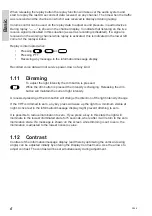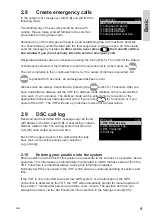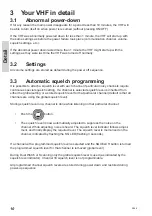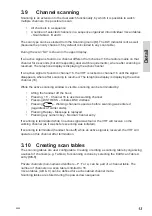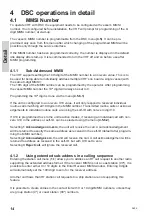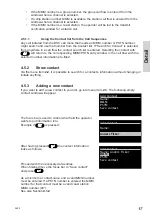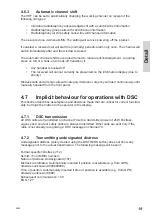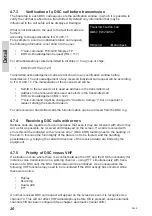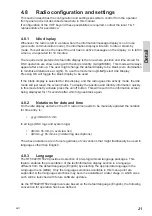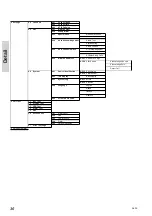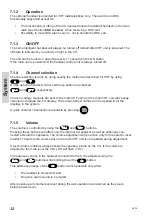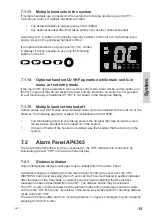
20
Detail
4.7.3
Verification of a DSC call before transmission
The final step in each DSC call sequence is the verification window, in which it is possible to
verify the call that is about to be transmitted. By default only information that may be
influenced in the call setup will be displayed. Example:
Transmit Station Call
MM
S
I
:
00
12345
67
O
K/
sen
d
<M
enu
/b
ac
k
What is not indicated to the user is the fact that calls are
formed
according to the specifications ITU R.493-11.
For example in a call (an individual station call request)
the following information is not shown to the user:
•
1
st
tele-command: F3E/G3E Simplex TP
•
EOS: Acknowledgement request (RQ = 117)
For all radiotelephony calls transmitted to all ships or to a group of ships:
•
EOS: End Of Call (127)
Transmitted acknowledgement calls are not shown in any verification window before
transmission. The acknowledgement of any received individual call request will be according
to ITU R.493-11. The manipulation of the received call will be:
•
Self-ID in the received call is used as address in the transmitted call
•
Address in the received call is used as self-ID in the transmitted call
•
EOS: Acknowledgement (BQ = 122)
•
1
st
tele-command might be changed to “Unable to Comply” (104) on operator’s
request, stating the selected reason.
For all received or transmitted calls the full information can be retrieved from the DSC log.
4.7.4
Receiving DSC calls with errors
Distress calls are regarded of such importance that even if they are received with errors they
will, as far as possible, be received and displayed on the screen. If a call is received with
errors this will be indicated with a “receive error” (REC ERR) marking next to the heading of
the call. In this case the full integrity of the data is not to be trusted, and the handling
possibilities (e.g. relaying the call with direct use of the received data) are limited by the
equipment.
4.7.5
Priority of DSC versus VHF
If a situation occurs where there is a conflict between the VHF and the DSC functionality (for
instance voice transmission on a working channel – using PTT, simultaneously with trans-
mission of a DSC call), the DSC transmission will be prioritized. As a consequence the
following VHF functions may need to be re-initiated if the DSC activity has occurred while
these were active:
•
Replay
•
Scanning
•
Dual watch
•
PTT
A normal received DSC call request will appear on the screen as soon it is recognized on
channel 70. This will not affect VHF radiotelephony before OK is pressed, unless automatic
channel shift has been configured (See chapter: Automatic channel shift:)
0605
Содержание RT5022 VHF DSC
Страница 1: ...SAILOR RT5022 VHF DSC SAILOR RT5020 VHF DSC Duplex OPERATION MANUAL...
Страница 2: ......
Страница 66: ......
Страница 67: ......
Страница 68: ...Thrane Thrane A S info thrane com www thrane com B5022GB0 Issue L 09 02...

